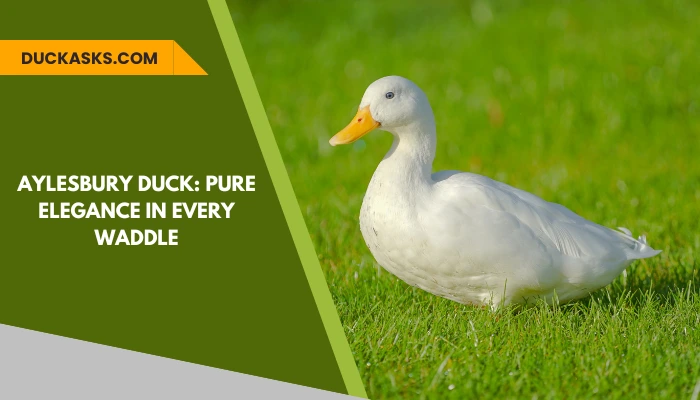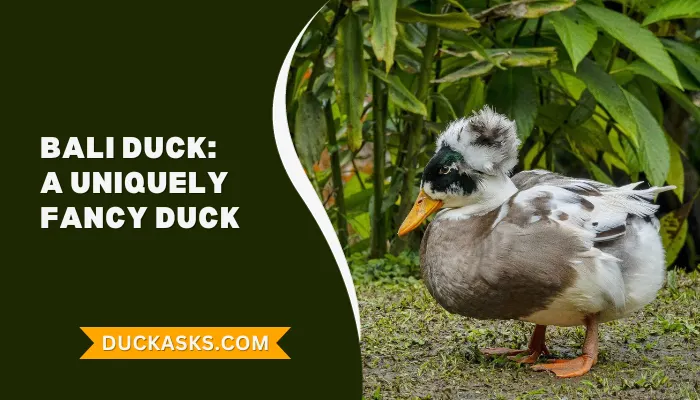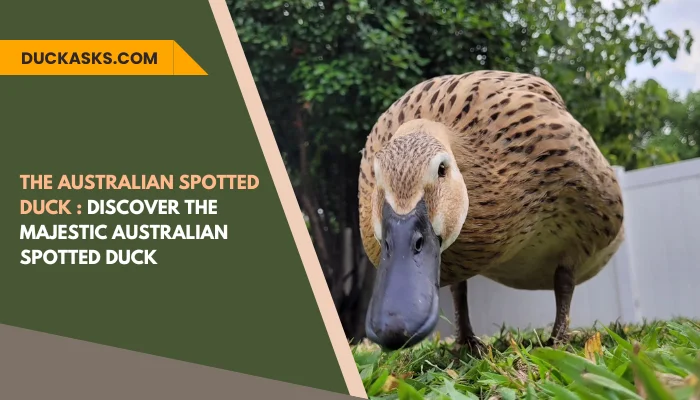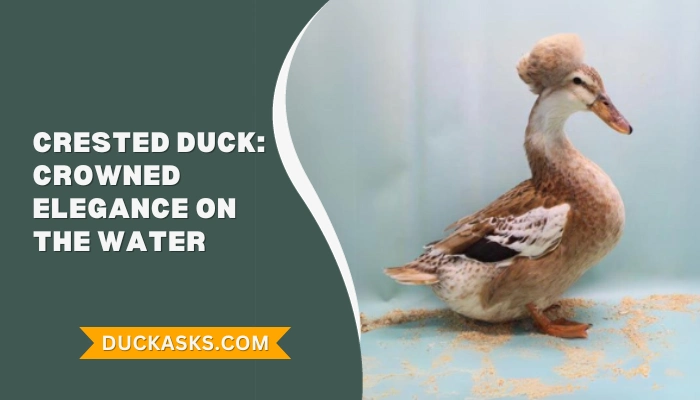Dutch Hookbill Duck: History And Breed Guide
The Dutch Hookbill duck, or Hookbill, is a popular breed of domestic duck. Two characteristics make this duck highly popular: the down-curved beak and the duck’s incredible egg-laying capacity.
Breeding and raising this beautiful duck is relatively easy. Nonetheless, we will explore every relevant information about this duck to increase your success.
Don’t know where to start?
Stick around and learn details about the Hookbill’s diet, feeding schedule and things to consider while breeding, among other things.
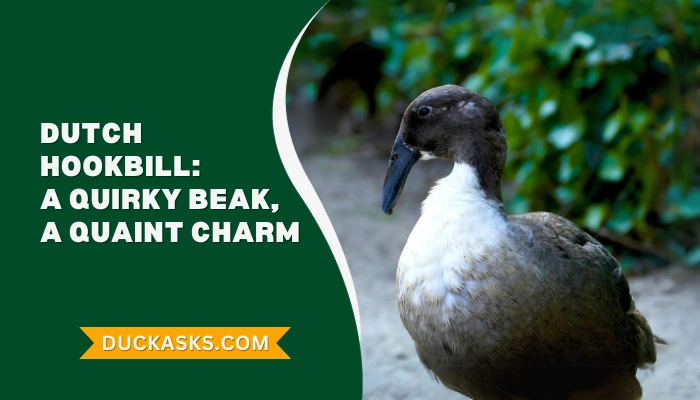
Dutch Hookbill Duck Profile
| Name | Dutch Hookbill Duck |
|---|---|
| Scientific Name | Anas platyrhynchos domesticus |
| Common Names | Dutch Hookbill, Hook Bill, Kromsnaveleend, Krombekeend |
| Origin | Origin Netherlands (Allegedly) |
| Size | Medium |
| Weight | 4 to 5 pounds (drakes) 2 to 3 pounds (ducks) |
| Lifespan | 4 to 8 years |
| Feather Color | Feather Color Dusty, White-Bibbed, White |
| Climate Tolerance | High |
| Behavior | Docile |
| Special Features | Down-curved beak |
| Breeding and Maintenance | Easy |
| Easy to Keep? | Yes |
| Duck Purpose | Egg layer, ornament, exhibition |
| Egg Productivity | High |
| Rarity | Very Rare (Endangered) |
Overview of Dutch Hookbill Ducks
The Dutch Hookbill duck is a domestic duck popular for its unique down-curved beak. Many theories about the origin of this breed exist, but so far, none of them have enough backup.
Currently, uses for this duck include raising them as pets or as part of a single-farm egg environment.
History and Origins of Dutch Hookbill Ducks
While the Hookbill duck is an ancient bird with documentation dating back to the seventeenth century, its actual origin date is unknown.
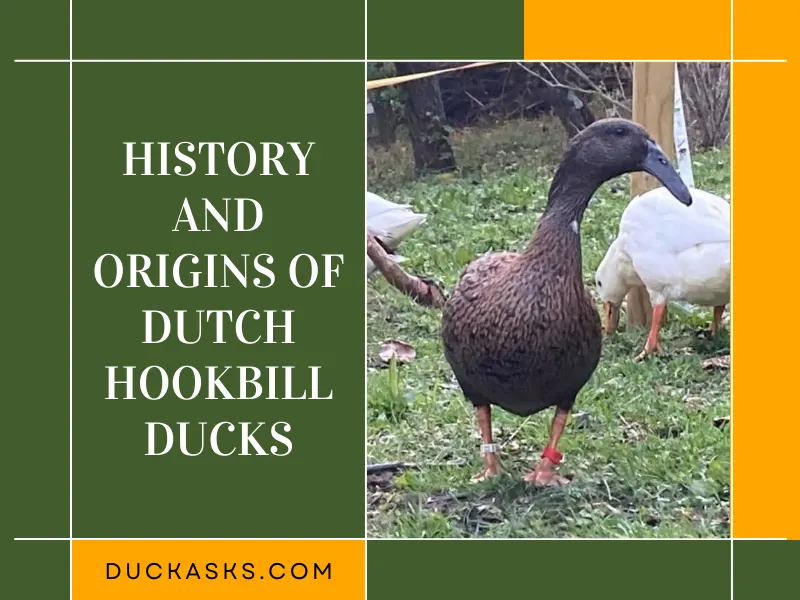
For now, the earliest record of this duck breed is allegedly the publication Ornithologiæ Libri Tres, written by Francis Willughby in 1676.
In this document, the author compared the Hookbill to “the common tame duck.”
Another popular theory is that the origin of this duck breed resides in the Netherlands, back in 1676. The ducks were allegedly popular egg producers in this country.
As years passed, the population of Hookbill ducks decreased worldwide due to the lack of demand for duck eggs. Now, only 800 egg-laying hens exist and the breed has become an endangered species.
Physical Characteristics and Features
Undoubtedly, the most distinctive feature of the Hookbill duck is the bill, which curves downward.

Historically, a general belief is that hunters developed the ducks with this unique trait to identify them from wild ducks.
Other than the bill, the rest of the Hookbill duck looks similar to Mallard ducks. The body is of medium size and they have a lightweight build.
While drakes are between four and five pounds, ducks are usually between two and three pounds.
At a glance –
| Characteristic | Description |
|---|---|
| Size | Light breed, weighing 3.5-5 kg |
| Heads | Distinctive downward-curved beak |
| Bills | Three bill types: extreme curve, moderate curve, and straight |
| Colors | Dusky, white-bibbed-dusky, white. Rare colors include Aleutian, snowy, golden, and gray |
| Personality Traits | Curious, sociable, highly intelligent, spirited, and adaptable |
| Purposes | Traditionally raised for egg production and exhibition purposes |
Feather Colors
The Dutch Hookbill duck can be of three different colors, as explained here.
- Dusty, also known as dusky or dark. Ducks of this color have dark and gray browns across its body.
- White-Bibbed. This variation consists of white colors over the chest and other features.
- White. The ducks are white.
Differences Between Dutch Hookbill Ducks and Dutch Hookbill Drakes
While female and male Hookbill ducks share the same bill shape, other slight differences can help you identify one from the other.
For instance, mature Hookbill drakes are larger than hens. Another difference is that females have more audible and intense quacking.
Behavior and Traits of Dutch Hookbill Ducks
Dutch Hookbill ducks can be indifferent to humans sometimes, but they still are docile and calm animals. In fact, its elevated independent level is a characteristic that could benefit you.

Create a secure living place and the duck will usually keep to itself.
Diet
The preferred diet for Dutch Hookbill ducks must include balanced food, which is why commercial duck or poultry feed is often the most appropriate.
Additionally, the duck’s elevated foraging skill will allow it to find slugs, snails, insects and other small animals to eat.
For this reason, allowing the Hookbill to forage will help them keep their independence, find other food and keep them in a good mood.
Breeding
The normal breeding season of Dutch Hookbill ducks begins early in the year and continues until early summer. During this period, the ducks will find a partner and mate for that season.
Then, the hens will produce between five and eight eggs and sit on them to hatch them.
This process can take from 26 to 28 days until the ducklings hatch.
Lifespan
The Dutch Hookbill duck can live between four to eight years. Sometimes, the duck could live up to twelve years. Some conditions are necessary to increase survival rate, like a quality living space, rich food and protection against predators and illnesses.
Breeding and Raising
The Dutch Hookbill duck requires specific accommodations to mate and breed successfully. If you want to increase your chances of breeding and raising these ducks properly, here’s what you must do.

Some Tips and Considerations for Successful Breeding
- Get the mating pair from quality sellers. If you buy cheap or don’t evaluate different sellers, you’re more likely to get poor-quality ducks. Thus, the quality of the offspring will be lower.
- The ducks may show signs during the mating season, like biting or pecking. If you notice this behavior, make the accommodations and let the ducks mate without interference.
- Inbreeding can cause severe health issues later on. For instance, the ducks may lose some of their quality physical traits and the hens may produce fewer eggs.
- If you spot physical flaws or identify odd behavior, remove the duck from the flock and take it to a vet.
Feeding and Housing Requirements
One thing to keep in mind is that the Dutch Hookbill duck is an excellent forager. Therefore, they will need plenty of space to move freely without risking their security.
If you create a duck house or coop, set up fencing to keep the ducks safe while they wander around the perimeter.
As for the housing, this duck breed will require between three to four square feet of space per duck. This area must have proper ventilation and enough airflow.
Also, dry and warm bedding will be crucial to ensure the ducks are comfortable and healthy.
Feeding
The ideal schedule to feed your Dutch Hookbill ducks is twice daily. Starting early in the morning, the ducks should receive a small but enough portion. Then, refill the feeding bowl or container later in the day once it runs out. Equally important is to clean leftovers and reduce food portions if they don’t eat all.
The Egg Productivity of Dutch Hookbill Ducks
The female Dutch Hookbill can lay from 100 to 225 eggs yearly, but it will depend on different factors. For example, the ducks must have proper living conditions, a good diet and not be heavily inbred.
Under these conditions, hens could lay over 200 eggs within a year. These eggs are large, weigh 60g and have varying colors. Some are blue, white and green. Shades between these colors also exist. Other than being productive, the eggs of the Dutch Hookbill are good-looking.
The Meat Quality and Popularity of Dutch Hookbill Ducks
The meat quality of the Dutch Hookbill duck is good, but this duck is not viable for this meat production. For starters, the duck is rare and expensive, already posing considerable complications from the start.
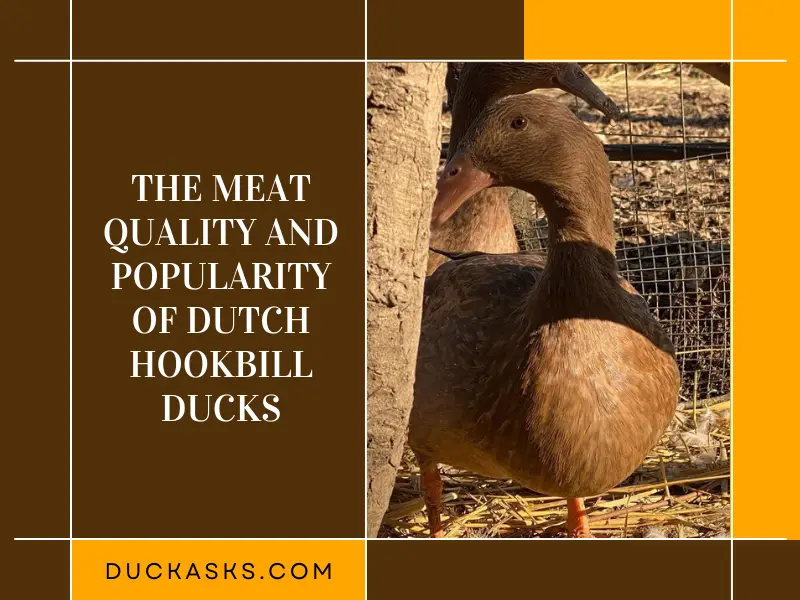
Then, once the duck reaches maturity, its body is still too small to make it worth it.
If you raise the Dutch Hookbill duck for consumption, you will get approximately one pound of meat. Therefore, it’s not worth the harvesting.
Frequently Asked Questions
- Are Dutch Hookbill ducks friendly?
The Dutch Hookbill is a friendly duck due to their docile personality. This duck breed can be indifferent to humans sometimes, but they’re not aggressive.
- Can Dutch Hookbill ducks fly?
Yes, the Dutch Hookbill duck is an excellent flyer. Thus, it’s crucial to clip the wings to keep them from flying away. Building tall fences is also necessary to prevent them from flying over the top, even with clipped wings.
- Are Dutch Hookbill Ducks Good for Small-scale Farming?
The Dutch Hookbill duck is a decent breed for small-scale farming. And the ducks are good layers and their behavior is pleasant enough to thrive in this application.
Conclusion
The Dutch Hookbill duck is fascinating. Despite becoming an endangered breed, it remains one of the most reliable egg layers compared to other duck breeds.
Not only that, but the unique beak shape makes it a highly distinctive bird suitable for ornament and exhibition purposes.
Did you find the Dutch Hookbill as interesting as we did? Don’t forget to check our Twitter, Facebook and Pinterest networks to stay connected with us.
We regularly share information, articles and more captivating publications related to ducks and birds!
References:
- https://livestockconservancy.org/heritage-breeds/heritage-breeds-list/dutch-hookbill-duck/
- https://www.omlet.co.uk/breeds/ducks/hook_bill/
- https://paradisepond.us/pages/dutch-hookbills
Image Credit:
- https://www.instagram.com/happy.huhn/
- https://www.instagram.com/il_giardino_dei_polli/
- https://www.instagram.com/paulieparakeet/
- https://www.instagram.com/kijkboerderij_rundal/

